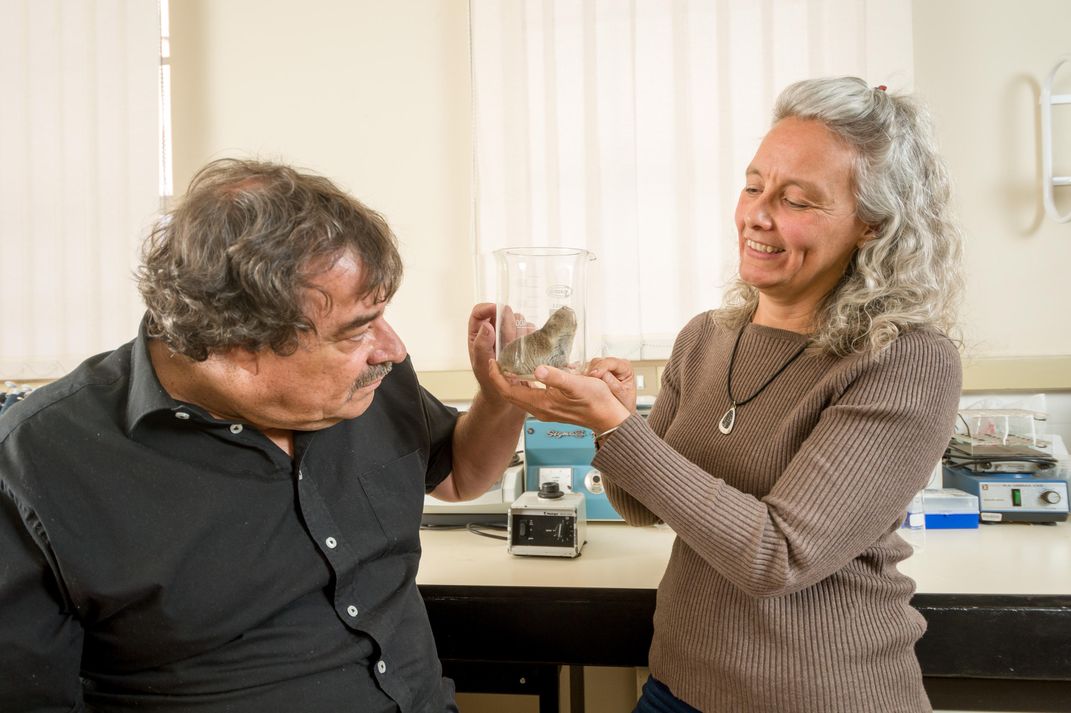Mole Rats Can’t Feel Wasabi’s Painful Kick, Hydrochloric Acid Burns or Hardly Any Pain at All
And studying the impervious critters might help scientists figure out new ways to treat pain in humans
/https://tf-cmsv2-smithsonianmag-media.s3.amazonaws.com/filer/ff/b2/ffb24018-a3de-493a-a610-9d01f549f8aa/naked-mole-ratzp174550_1.jpg)
Horseradish, hot mustard and wasabi get their distinctive kick from a compound called allyl isothiocyanate, or AITC. Its effect is pungent, sort of enjoyable, but also a little painful. Most animals naturally avoid substances with AITC. But as Cara Giaimo reports for the New York Times, one species of African mole rat seems to be completely immune to its wince-inducing qualities.
As part of a new study published in Science, an international team of researchers tested the tolerance of nine African rodent species—eight of which were mole rats—to three pain-causing substances: AITC, an acidic solution with a PH similar to that of lemon juice and capsaicin, which gives peppers their spiciness. Previous research had shown that naked mole rats, in addition to being able to endure environments with no oxygen, are impervious to acid and capsaicin. The team behind the new study hope that additional insights into pain tolerance among rodents will help open up new pathways for treating pain in humans.
The researchers injected the paws of their subjects with the three substances. Karlien Debus, study co-author and PhD student at the Max Delbrück Center for Molecular Medicine in Germany, tells Gizmodo’s George Dvorsky that the injections had no long-term toxic effects on the critters. But the team was on the lookout for signs of discomfort, like paw licking or flicking.
Four of the mole rat species showed sensitivity to all three substances. Three species were immune to the acidic solution, and two were unfazed by capsaicin. The naked mole rat was impervious to both, confirming the earlier findings. But the highveld mole-rat was the only one that seemed unbothered by the AITC.

Initially, the highvelds were injected with a 75 percent AITC solution. Then the researchers upped the ante, giving them a pure dose. (Debus had to wear a gas mask when carrying out this part of the experiment.) But the highvelds “had no reaction whatsoever,” Gary Lewin, study co-author and molecular physiologist at the Max Delbrück Center, tells Giaimo.
Genetic material from the highvelds’ biological samples offered clues as to what might be making them wasabi proof—namely, an unusually high number of little structures called “leak channels” on the surface of their nerves.
“The leak channels make the nerves unable to convey messages about wasabi pain to the brain,” explains study co-author Thomas Park, a professor of biological sciences at the University of Illinois. “Instead of delivering the signal from the receptor to the brain, the leak channels divert the signal.”
Why highveld mole rats possess this unique trait was another interesting question—one that Daniel Hart, study co-author and PhD student at the University of Pretoria was able to answer. As Hart knew from years of studying mole rats, highvelds share their natural habitat with natal droptail ants, which boast a fierce sting. And that sting activates the same pain receptors that respond to AITC.
“Over time,” Park says, “the highveld mole-rats evolved to become unaffected by the sting.”
If scientists can one day figure out how to add leak channels to human pain cells, it might be possible to treat pain without potentially addictive medications.
“Mole-rats are extremely curious animals,” Park opines. “This new discovery—that they have evolved to be insensitive to certain pain stimuli common in their environment—is another example of the cool biological lessons to be learned from studying them.”